Dream Pool Essays
| Dream Pool Essays | |
|---|---|
| Chinese | 夢溪筆談 |
| 梦溪笔谈 | |
| Mèng Xī Bǐtán | |
| Meng Hsi Pi -t'an | |
| mon6 chi1 piq7 de2 | |
| mung6 kai1 bat1 taam4 | |
| /mɨuŋ kʰeipˠiɪt̚dɑm/ | |
Because I had only my writing brush and ink slab to converse with, I call it Brush Talks .
As the historian Chen Dengyuan points out, much of Shen Kuo's written work was probably purged under the leadership of minister Cai Jing (1046–1126). [8] For example, only six of Shen's books remain, and four of these have been significantly altered since the time they were penned by the author. [9] The Dream Pool Essays was first quoted in a Chinese written work of 1095 AD, showing that even towards the end of Shen's life his final book was becoming widely printed . [10] The book was originally 30 chapters long, yet an unknown Chinese author's edition of 1166 AD edited and reorganized the work into 26 chapters. [10] There is one surviving copy of this 1166 edition now in Japan, while a Chinese reprint was produced in 1305. [10] In 1631 another edition was printed, but it was heavily reorganized into three broad chapters. [10]
In modern times, Zhang Jiaju's biographical work Shen Kuo (1962) contains selected translations of the Dream Pool Essays from Middle Chinese into modern Vernacular Chinese . [11] The Dream Pool Essays has also been translated from Chinese into various foreign languages. Various volumes of Joseph Needham 's Science and Civilization in China series published since 1954 contain a large amount of selected English translations of the Dream Pool Essays . [12] The Brush Talks from Dream Brook is the first complete English translation, presented in two volumes by translators Wang Hong and Zhao Zheng, and published in 2008 by the Sichuan People’s Publishing House , China. A Japanese translation of the 1166 Chinese edition was prepared by the History of Science Seminar, Institute for Research in Humanities (Jimbun Kagaku Kenkyusho) for Kyoto University , and printed by the author Umehara Kaoru in his 3-volume edition of Bokei hitsudan (1978–1981). [12] Quoted excerpts from the Dream Pool Essays in French were printed in the written works of J. Brenier in 1989 [ a ] and J. F. Billeter in 1993. [ b ] A complete German translation is offered in Shen Kuo: Pinselunterhaltungen am Traumbach. Das Gesamte Wissen des Alten China , translated and edited by Konrad Herrmann, and published in 1997 by Diederichs Verlag Munich (Gelbe Reihe Magnum, vol. I).

Geological theory
With Shen's writings on fossils , geomorphology , and shifting geographical climates , he states in the following passages:
In the Zhi-ping reign period [1064–67 AD] a man of Zezhou was digging a well in his garden, and unearthed something shaped like a squirming serpent, or dragon. He was so frightened by it that he dared not touch it, but after some time, seeing that it did not move, he examined it and found it to be stone. The ignorant country people smashed it, but Zheng Boshun, who was magistrate of Jincheng at the time, got hold of a large piece of it on which scale-like markings were to be seen exactly like those on a living creature. Thus a serpent or some kind of marine snake ( chhen ) had certainly been turned to stone, as happens with the 'stone-crabs'. [13] [14]
In recent years [cca. 1080] there was a landslide on the bank of a large river in Yong-ning Guan near Yanzhou. The bank collapsed, opening a space of several dozens of feet, and under the ground a forest of bamboo shoots was thus revealed. It contained several hundred bamboo with their roots and trunks all complete, and all turned to stone...Now bamboos do not grow in Yanzhou. These were several dozens of feet below the present surface of the ground, and we do not know in what dynasty they could possibly have grown. Perhaps in very ancient times the climate was different so that the place was low, damp, gloomy, and suitable for bamboos. On the Jin-hua Shan in Wuzhou there are stone pine-cones, and stones formed from peach kernels, stone bulrush roots, stone fishes, crabs, and so on, but as these are all (modern) native products of that place, people are not very surprised at them. But these petrified bamboos appeared under the ground so deep, though they are not produced in that place today. This is a very strange thing. [14] [15]
When the Director of the Astronomical Observatory asked Shen Kuo if the shapes of the sun and moon were round like balls or flat like fans, Shen Kuo explained his reasoning for the former:
If they were like balls they would surely obstruct each other when they met. I replied that these celestial bodies were certainly like balls. How do we know this? By the waxing and waning of the moon. The moon itself gives forth no light, but is like a ball of silver; the light is the light of the sun (reflected). When the brightness is first seen, the sun(-light passes almost) alongside, so the side only is illuminated and looks like a crescent. When the sun gradually gets further away, the light shines slanting, and the moon is full, round like a bullet. If half of a sphere is covered with (white) powder and looked at from the side, the covered part will look like a crescent; if looked at from the front, it will appear round. Thus we know that the celestial bodies are spherical. [16]
When the director of the astronomical observatory asked Shen Kuo why eclipses occurred only on an occasional basis while in conjunction and opposition once a day, Shen Kuo wrote:
I answered that the ecliptic and the moon's path are like two rings, lying one over the other, but distant by a small amount. (If this obliquity did not exist), the sun would be eclipsed whenever the two bodies were in conjunction, and the moon would be eclipsed whenever they were exactly in position. But (in fact) though they may occupy the same degree, the two paths are not (always) near (each other), and so naturally the bodies do not (intrude) upon one another. [16]
On the use of the sighting tube to fix the position of the pole star , Shen Kuo wrote:
Before Han times it was believed that the pole star was in the center of the sky, so it was called Jixing (Summit star). Zu Geng(-zhi) found out with the help of the sighting tube that the point in the sky which really does not move was a little more than 1 degree away from the summit star. In the Xining reign-period (1068–1077) I accepted the order of the emperor to take charge of the Bureau of the Calendar . I then tried to find the true pole by means of the tube. On the very first night I noticed that the star which could be seen through the tube moved after a while outside the field of view. I realized, therefore, that the tube was too small, so I increased the size of the tube by stages. After three months' trials I adjusted it so that the star would go round and round within the field of view without disappearing. In this way I found that the pole star was distant from the true pole somewhat more than 3 degrees. We used to make the diagrams of the field, plotting the positions of the star from the time when it entered the field of view, observing after nightfall, at midnight, and early in the morning before dawn. Two hundred of such diagrams showed that the 'pole star' was really a circumpolar star . And this I stated in my detailed report to the emperor. [17]
Movable type printing
On the methods of Bi Sheng 's invention of movable type printing between the years 1041 to 1048 AD, Shen Kuo wrote:
[Bi Sheng] took sticky clay and cut in it characters as thin as the edge of a coin. Each character formed, as it were, a single type. He baked them in the fire to make them hard. He had previously prepared an iron plate and he had covered his plate with a mixture of pine resin, wax, and paper ashes. When he wished to print, he took an iron frame and set it on the iron plate. In this he placed the types, set close together. When the frame was full, the whole made one solid block of type. He then placed it near the fire to warm it. When the paste [at the back] was slightly melted, he took a smooth board and pressed it over the surface, so that the block of type became as even as a whetstone. If one were to print only two or three copies, this method would be neither simple nor easy. But for printing hundreds or thousands of copies, it was marvelously quick. As a rule he kept two forms going. While the impression was being made from the one form, the type was being put in place on the other. When the printing of the one form was finished, the other was then ready. In this way the two forms alternated and the printing was done with great rapidity. [18]
Personal beliefs and philosophy
Of Taoism and the inability of empirical science to explain everything in the world, Shen Kuo wrote:
Those in the world who speak of the regularities underlying the phenomena, it seems, manage to apprehend their crude traces. But these regularities have their very subtle aspect, which those who rely on mathematical astronomy cannot know of. Still even these are nothing more than traces. As for the spiritual processes described in the [ Book of Changes ] that "when they are stimulated, penetrate every situation in the realm," mere traces have nothing to do with them. This spiritual state by which foreknowledge is attained can hardly be sought through changes, of which in any case only the cruder sort are attainable. What I have called the subtlest aspect of these traces, those who discuss the celestial bodies attempt to know by depending on mathematical astronomy; but astronomy is nothing more than the outcome of conjecture. [19]
Dissertation on the Timberwork Manual
Below are two passages from Shen's book outlining the basics contained in Yu Hao 's Timberwork Manual . Yu Hao was a Chinese architect of the earlier 10th, and Kuo was one to praise his work. In the first quote, Shen Kuo describes a scene where Yu Hao gives advice to another artisan architect about slanting struts for diagonal wind bracing:
When Mr. Qian (Wei-yan) was Governor of the two Zhejiang provinces, he authorized the building of a wooden pagoda at the Fan-tian Si ( Brahma -Heaven Temple) in Hangzhou with a design of twice three stories. While it was under construction General Chhien went up to the top and was worried because it swayed a little. But the Master-Builder explained that as the tiles had not yet been put on, the upper part was still rather light, hence the effect. So then they put on all the tiles, but the sway continued as before. Being at a loss what to do, he privately sent his wife to see the wife of Yu Hao with a present of golden hair pins , and enquire about the cause of the motion. (Yu) Hao laughed and said: 'That's easy, just fit in struts (pan) to settle the work, fixed with (iron) nails , and it will not move any more.' The Master-Builder followed his advice, and the tower stood quite firm. This is because the nailed struts filled in and bound together (all the members) up and down so that the six planes (above and below, front and back, left and right) were mutually linked like the cage of the thorax . Although people might walk on the struts, the six planes grasped and supported each other, so naturally there could be no more motion. Everybody acknowledged the expertise thus shown. [20]
In this next quote, Shen Kuo describes the dimensions and types of architecture outlined in Yu Hao's book:
Methods of building construction are described in the Timberwork Manual , which, some say, was written by Yu Hao . (According to that book), buildings have three basic units of proportion, what is above the cross-beams follows the Upperwork Unit, what is above the ground floor follows the Middlework Unit, and everything below that (platforms, foundations, paving, etc.) follows the Lowerwork Unit. The length of the cross-beams will naturally govern the lengths of the uppermost cross-beams as well as the rafters, etc. Thus for a (main) cross-beam of (8 ft) length, an uppermost cross-beam of (3.5 ft) length will be needed. (The proportions are maintained) in larger and smaller halls. This (2/28) is the Upperwork Unit. Similarly, the dimensions of the foundations must match the dimensions of the columns to be used, as also those of the (side-) rafters , etc. For example, a column (11 ft) high will need a platform (4.5 ft) high. So also for all the other components, corbelled brackets, projecting rafters, other rafters, all have their fixed proportions. All these follow the Middlework Unit (2/24). Now below of ramps (and steps) there are three kinds, steep, easy-going, and intermediate. In places these gradients are based upon a unit derived from the imperial litters. Steep ramps are ramps for ascending which the leading and trailing bearers have to extend their arms fully down and up respectively (ratio 3/35). Easy-going ramps are those for which the leaders use elbow length and the trailers shoulder height (ratio 1/38); intermediate ones are negotiated by the leaders with downstretched arms and trailers at shoulder height (ratio 2/18). These are the Lowerwork Units. The book (of Yu Hao) had three chapters. But builders in recent years have become much more precise and skillful (yen shan) than formerly. Thus for some time past the old Timberwork Manual has fallen out of use. But (unfortunately) there is hardly anybody capable of writing a new one. To do that would be a masterpiece in itself! [21]
Botany and zoology
Shen Kuo described the natural predator insect similarly shaped to the gou-he ("dog-grubs") which preyed upon the agricultural pest infestation of zi-fang , the moth Leucania separata : [22]
In the Yuan-Feng reign period (1078–1085), in the Qingzhou region, an outbreak of zi-fang insects caused serious damage to the crops in the fields in autumn. Suddenly another insect appeared in swarms of thousands and tens of thousands, covering the entire ground area. It was shaped like earth-burrowing gou-he (dog grubs), and its mouth was flanked by pincers. Whenever it met a zi-fang , it would seize it with the pincers and break the poor beast into two bits. Within ten days all the zi-fang had disappeared, so the locality had an abundant harvest. Such kinds of insects have been known since antiquity and the local people call them pang-bu-ken ("not allowing other [insects] to be"). [22]
Natural phenomena
Around 1078, Shen Kuo wrote an accurate description of the damaging effects of lightning to buildings and to the specific materials of objects within. Taking an objective and speculative viewpoint, he stated:
A house belonging to Li Shunju was struck by lightning. Brilliant sparkling light was seen under the eaves. Everyone thought that the hall would be burnt, and those who were inside rushed out. After the thunder had abated, the house was found to be alright, though its walls and the paper on the windows were blackened. On certain wooden shelves, certain lacquered vessels with silver mouths had been struck by the lightning, so that the silver had melted and dropped to the ground, but the lacquer was not even scorched. Also, a valuable sword made of strong steel had been melted to liquid, without the parts of the house nearby being affected. One would have thought that the thatch and wood would have been burnt up first, yet here were metals melted and no injury to thatch and wood. This is beyond the understanding of ordinary people. There are Buddhist books which speak of 'dragon fire' which burns more fiercely when it meets with water instead of being extinguished by water like 'human' fire. [ i ] Most people can only judge of things by the experiences of ordinary life, but phenomena outside the scope of this are really quite numerous. How insecure it is to investigate natural principles using only the light of common knowledge, and subjective ideas. [23]
"Strange Happenings"
A passage called "Strange Happenings" contains a peculiar account of an unidentified flying object . Shen wrote that, during the reign of Emperor Renzong (1022–1063), an object as bright as a pearl occasionally hovered over the city of Yangzhou at night, but described first by local inhabitants of eastern Anhui and then in Jiangsu . [24] Shen wrote that a man near Xingkai Lake observed this curious object; allegedly it:
...opened its door and a flood of intense light like sunbeams darted out of it, then the outer shell opened up, appearing as large as a bed with a big pearl the size of a fist illuminating the interior in silvery white. The intense silver-white light, shot from the interior, was too strong for human eyes to behold; it cast shadows of every tree within a radius of ten miles. The spectacle was like the rising Sun, lighting up the distant sky and woods in red. Then all of a sudden, the object took off at a tremendous speed and descended upon the lake like the Sun setting. [25]
Shen went on to say that Yibo, a poet of Gaoyou , wrote a poem about this "pearl" after witnessing it. Shen wrote that since the "pearl" often made an appearance around Fanliang in Yangzhou, the people there erected a "Pearl Pavilion" on a wayside, where people came by boat in hopes to see the mysterious flying object. [26]
Around 1065 Shen Kuo wrote about the assembly methods for swords , and the patterns produced in the steel: [27]
Ancient people use chi kang , (combined steel), for the edge, and jou thieh (soft iron) for the back, otherwise it would often break. Too strong a weapon will cut and destroy its own edge; that is why it is advisable to use nothing but combined steel. As for the yu-chhang (fish intestines) effect, it is what is now called the 'snake-coiling' steel sword, or alternatively, the 'pine tree design'. If you cook a fish fully and remove its bones, the shape of its guts will be seen to be like the lines on a 'snake-coiling sword'. [28]
Chinese clothing
Shen Kuo observed that the Chinese since some centuries prior had entirely adopted barbarian fashions.
中國衣冠,自北齊以來,乃全用胡服。窄袖、緋綠短衣、長靿靴、有鞢帶,皆胡服也。窄袖利於馳射,短衣、長靿皆便於涉草。胡人樂茂草,常寢處其間,予使北時皆見之。雖王庭亦在深荐中。予至胡庭日,新雨過,涉草,衣褲皆濡,唯胡人都無所沾。帶衣所垂蹀躞,蓋欲佩帶弓劍、帨、算囊、刀勵之類。 The clothing of China since the Northern Qi [550–557] onward has been entirely made barbarian. Narrow sleeves, short dark red or green robes, tall boots and metal girdle ornaments are all barbarian garb. The narrow sleeves are useful when shooting while galloping. The short robes and tall boots are convenient when passing through tall grass. The barbarians all enjoy thick grass as they always sleep in it. I saw them all do it when I was sent north. Even the king's court is in the deep grasses. On the day I had arrived at the barbarian court the new rains had passed and I waded through the grass. My robes and trousers were all soaked, but the barbarians were not at all wet. With things hanging from robe and belt they walk about. One perhaps might want to hang items like a bow and blade, handkerchief, coin purse or knife from the belt.
Book chapters
On the humanities:
- Official life and the imperial court (60 paragraphs)
- Academic and examination matters (10 paragraphs)
- Literary and artistic (70 paragraphs)
- Law and police (11 paragraphs)
- Military (25 paragraphs)
- Miscellaneous stories and anecdotes (72 paragraphs)
- Divination , magic , and folklore (22 paragraphs)
On natural sciences:
- On the I Ching , Yin and Yang , and 5 elements (7 paragraphs)
- Mathematics (11 paragraphs)
- Astronomy and calendar (19 paragraphs)
- Meteorology (18 paragraphs)
- Geology and mineralogy (17 paragraphs)
- Geography and cartography (15 paragraphs)
- Physics (6 paragraphs)
- Chemistry (3 paragraphs)
- Engineering , metallurgy , and technology (18 paragraphs)
- Irrigation and hydraulic engineering (6 paragraphs)
- Architecture (6 paragraphs)
- Biological sciences, botany , and zoology (52 paragraphs)
- Agricultural arts (6 paragraphs)
- Medicine and pharmaceutics (23 paragraphs)
Humanistic sciences:
- Anthropology (6 paragraphs)
- Archeology (21 paragraphs)
- Philology (36 paragraphs)
- Music (44 paragraphs)
(Total number of paragraphs = 584) [29]
- Chinese classics
- Chinese literature
- History of science and technology in China
- List of Chinese writers
- Technology of the Song dynasty
- ^ a: Shen Gua (1031–1091) et les Sciences, Revue d'Histoire des Sciences et de Leurs Applications (1989)
- ^ b: Florilège des notes du Ruisseau des rêves ( Mengxi bitan ) de Shen Gua (1031–1095) by Jean-François Billeter and 31 of his Geneva University students, in Études Asiatiques (1993)
- ^ i: See Greek fire
Related Research Articles

The 11th century is the period from 1001 through 1100 (MC) in accordance with the Julian calendar, and the 1st century of the 2nd millennium.
The Song dynasty was an imperial dynasty of China that ruled from 960 to 1279. The dynasty was founded by Emperor Taizu of Song, who usurped the throne of the Later Zhou dynasty and went on to conquer the rest of the Ten Kingdoms, ending the Five Dynasties and Ten Kingdoms period. The Song often came into conflict with the contemporaneous Liao, Western Xia and Jin dynasties in northern China. After retreating to southern China following attacks by the Jin dynasty, the Song was eventually conquered by the Mongol-led Yuan dynasty.
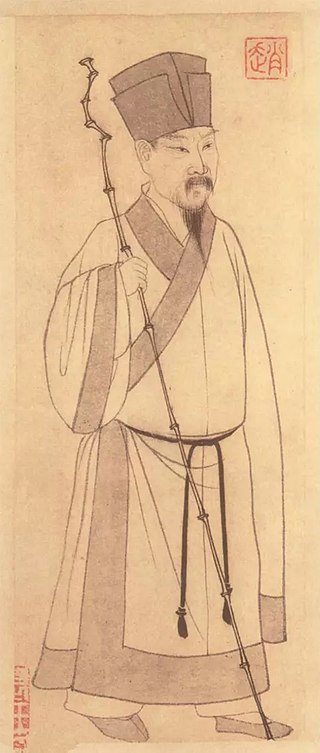
Su Shi , courtesy name Zizhan , art name Dongpo , was a Chinese calligrapher, essayist, gastronomer, pharmacologist, poet, politician, and travel writer during the Song dynasty. A major personality of the Song era, at times holding high-level political positions, Su Shi was also an important figure in Song Dynasty politics, aligning himself with Sima Guang and others, against the New Policy party led by Wang Anshi, gaining some level of popular support through his actions, and also sometimes experiencing politically motivated reversals to his government career.

Noel Joseph Terence Montgomery Needham was a British biochemist, historian of science and sinologist known for his scientific research and writing on the history of Chinese science and technology, initiating publication of the multivolume Science and Civilisation in China . A focus of his was what has come to be called the Needham Question of why and how China had ceded its leadership in Science and Technology to Western countries.

Bi Sheng was a Chinese artisan, engineer, and inventor of the world's first movable type technology, with printing being one of the Four Great Inventions. Bi Sheng's system was made of Chinese porcelain and was invented between 1039 and 1048 in the Song dynasty.

Shen Kuo or Shen Gua , courtesy name Cunzhong (存中) and pseudonym Mengqi Weng (夢溪翁), was a Chinese polymath, scientist, and statesman of the Song dynasty (960–1279). Shen was a master in many fields of study including mathematics, optics, and horology. In his career as a civil servant, he became a finance minister, governmental state inspector, head official for the Bureau of Astronomy in the Song court, Assistant Minister of Imperial Hospitality, and also served as an academic chancellor. At court his political allegiance was to the Reformist faction known as the New Policies Group, headed by Chancellor Wang Anshi (1021–1085).

Astronomy in China has a long history stretching from the Shang dynasty, being refined over a period of more than 3,000 years. The ancient Chinese people have identified stars from 1300 BCE, as Chinese star names later categorized in the twenty-eight mansions have been found on oracle bones unearthed at Anyang, dating back to the mid-Shang dynasty. The core of the "mansion" system also took shape around this period, by the time of King Wu Ding.
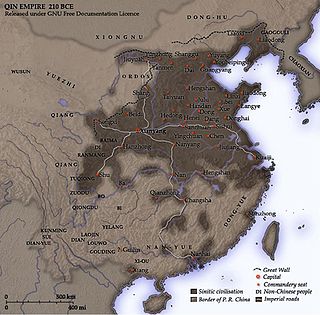
Donghu or Hu was a tribal confederation of nomadic people that was first recorded from the 7th century BCE and was destroyed by the Xiongnu in 150 BCE. They lived in northern Hebei, southeastern Inner Mongolia and the western part of Liaoning, Jilin and Heilongjiang along the Yan Mountains and Greater Khingan Range.

Ancient Chinese scientists and engineers made significant scientific innovations, findings and technological advances across various scientific disciplines including the natural sciences, engineering, medicine, military technology, mathematics, geology and astronomy.

The Song dynasty invented some technological advances in Chinese history, many of which came from talented statesmen drafted by the government through imperial examinations.
Yu Hao was a Chinese architect, structural engineer, and writer during the Song Dynasty.

Hua Sui was a Chinese scholar, engineer, inventor, and printer of Wuxi, Jiangsu province during the Ming dynasty. He belonged to the wealthy Hua family that was renowned throughout the region. Hua Sui is best known for creating China's first metal movable type printing in 1490 AD.
Wei Pu was a Chinese astronomer and politician of the Song Dynasty. He was born a commoner, but eventually rose to prominence as an astronomer working for the imperial court at the capital of Kaifeng. Wei became a trusted colleague of the famous Song polymath statesman and scientist Shen Kuo, who served as the head official for the Bureau of Astronomy, and worked on various projects with Wei Pu.
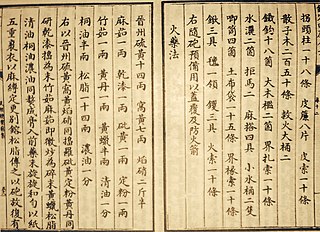
The Wujing Zongyao , sometimes rendered in English as the Complete Essentials for the Military Classics , is a Chinese military compendium written from around 1040 to 1044.
Zhu Yu was a Chinese maritime historian during the Song dynasty. He retired in Huang Gang (黄岗) of the Hubei province, bought a country house and named it "Pingzhou". He called himself "Expert Vegetable Grower of Pingzhou (萍洲老圃)". Between 1111 and 1117 AD, Zhu Yu wrote the book Pingzhou Ketan , published in 1119 AD. It covered a wide variety of maritime subjects and issues in China at the time. His extensive knowledge of maritime engagements, technologies, and practices were because his father, Zhu Fu, was the Port Superintendent of Merchant Shipping for Guangzhou from 1094 until 1099 AD, whereupon he was elevated to the status of governor there and served in that office until 1102 AD.
Chinese exploration includes exploratory Chinese travels abroad, on land and by sea, from the travels of Han dynasty diplomat Zhang Qian into Central Asia during the 2nd century BC until the Ming dynasty treasure voyages of the 15th century that crossed the Indian Ocean and reached as far as East Africa.
Nathan Sivin , also known as Xiwen , was an American sinologist, historian, essayist, educator, and writer. He taught first at Massachusetts Institute of Technology, then at the University of Pennsylvania until his retirement in 2006.

Science and Civilisation in China (1954–present) is an ongoing series of books about the history of science and technology in China published by Cambridge University Press. It was initiated and edited by British historian Joseph Needham (1900–1995). Needham was a well-respected scientist before undertaking this encyclopedia and was even responsible for the "S" in UNESCO. To date there have been seven volumes in twenty-seven books. The series was on the Modern Library Board's 100 Best Nonfiction books of the 20th century. Needham's work was the first of its kind to praise Chinese scientific contributions and provide their history and connection to global knowledge in contrast to eurocentric historiography.
Early writing on mineralogy, especially on gemstones, comes from ancient Babylonia, the ancient Greco-Roman world, ancient and medieval China, and Sanskrit texts from ancient India. Books on the subject included the Naturalis Historia of Pliny the Elder which not only described many different minerals but also explained many of their properties. The German Renaissance specialist Georgius Agricola wrote works such as De re metallica and De Natura Fossilium which began the scientific approach to the subject. Systematic scientific studies of minerals and rocks developed in post-Renaissance Europe. The modern study of mineralogy was founded on the principles of crystallography and microscopic study of rock sections with the invention of the microscope in the 17th century.
- ↑ Sivin (1995), III, 22.
- ↑ Mohn (2003), 1.
- ↑ Bowman (2000), 105.
- ↑ Needham (1986), Volume 4, Part 3, 660.
- ↑ Sivin (1995), III, 9.
- ↑ in his biography in the Dictionary of Scientific Biography (New York 1970–1990)
- ↑ Sivin, III, 44.
- ↑ Sivin, III, 44–45.
- 1 2 3 4 Sivin, III, 45.
- ↑ 张家驹 (1962). 沈括 . 上海人民出版社.
- 1 2 Sivin (1995), III, 49.
- ↑ Needham, Volume 3, 618.
- 1 2 Chan, 15.
- ↑ Needham, Volume 3, 614.
- 1 2 Needham, Volume 3, 415–416.
- ↑ Needham, Volume 3, 262.
- ↑ Needham, Volume 5, Part 1, 201.
- ↑ Ropp, 170.
- ↑ Needham, Volume 4, Part 3, 141.
- ↑ Needham, Volume 4, 82–84.
- 1 2 Needham, Volume 6, Part 1, 545.
- ↑ Needham, Volume 3, 482.
- ↑ Dong (2000), 69. (Professor Zhang Longqiao of the Chinese Department of Peking Teachers' College , who popularized this account in Beijing's Guang Ming Daily on February 18, 1979, in an article called "Could It Be That A Visitor From Outer Space Visited China Long Ago?", states is "a clue that a flying craft from some other planet once landed somewhere near Yangzhou in China.")
- ↑ Dong (2000), 69–70.
- ↑ Dong (2000), 70–71.
- ↑ "A History of Metallography" by Cyril Smith (1960)
- ↑ "A History of Metallography" by Cyril Smith (1960) Page 45
- ↑ Needham, Volume 1, 136.
Bibliography
- Bowman, John S. (2000). Columbia Chronologies of Asian History and Culture . New York: Columbia University Press.
- Chan, Alan Kam-leung and Gregory K. Clancey, Hui-Chieh Loy (2002). Historical Perspectives on East Asian Science, Technology and Medicine. Singapore: Singapore University Press ISBN 9971-69-259-7
- Mohn, Peter (2003). Magnetism in the Solid State: An Introduction . New York: Springer-Verlag Inc. ISBN 3-540-43183-7 .
- Needham, Joseph (1986). Science and Civilization in China: Volume 1, Introductory Orientations . Taipei: Caves Books, Ltd.
- Needham, Joseph (1986). Science and Civilization in China: Volume 3, Mathematics and the Sciences of the Heavens and the Earth . Taipei: Caves Books, Ltd.
- Needham, Joseph (1986). Science and Civilization in China: Volume 4, Physics and Physical Technology, Part 3: Civil Engineering and Nautics . Taipei: Caves Books, Ltd.
- Needham, Joseph (1986). Science and Civilization in China: Volume 5, Chemistry and Chemical Technology, Part 1: Paper and Printing . Taipei: Caves Books, Ltd.
- Needham, Joseph (1986). Science and Civilization in China: Volume 6, Biology and Biological Technology, Part 1: Botany . Taipei, Caves Books Ltd.
- Sivin, Nathan (1995). Science in Ancient China: Researches and Reflections . Brookfield, Vermont: VARIORUM, Ashgate Publishing.
- Ropp, Paul S. (1990). Heritage of China: Contemporary Perspectives on Chinese History. Berkeley: University of California Press. ISBN 978-0-520-06440-9
Further reading
- Fu, Daiwie . " On Mengxi Bitan’s world of marginalities and “south-pointing needles”. Fragment translation vs. contextual translation ." ( Archive ) In: Alleton, Vivianne and Michael Lackner (editors). De l'un au multiple: traductions du chinois vers les langues européennes Translations from Chinese into European Languages . Éditions de la maison des sciences de l'homme (MSH), 1999, Paris . p. 176–201. ISBN 273510768X , 9782735107681.
- Fu, Daiwie. " Mengxi Bitan as an example of organization of knowledge in Song biji ." Sinologie française 6 ( special issue on the history of science and technology ): 269–290.
External links
- Shen Kua: mathematician, engineer, physicist, and astronomer Archived 2011-08-17 at the Wayback Machine
- Works by Shen Kuo at Project Gutenberg
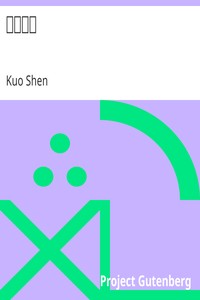

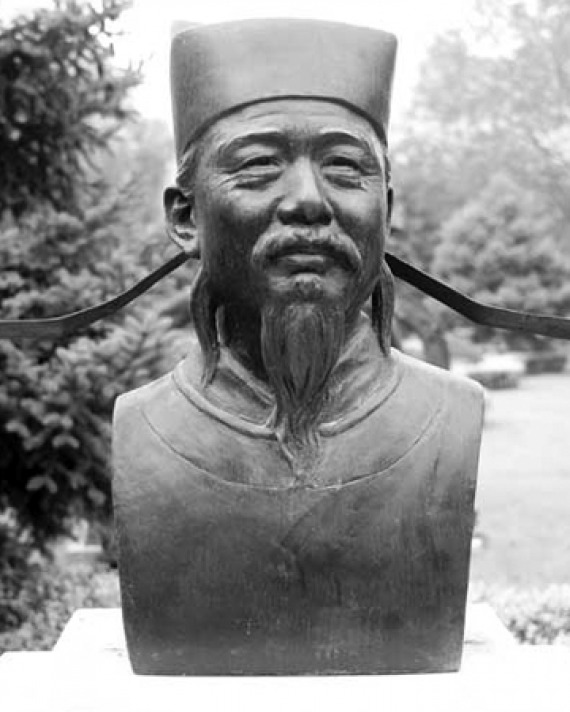



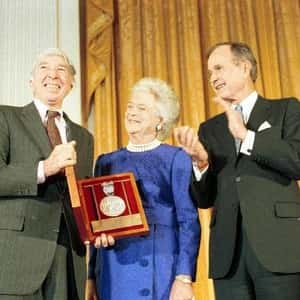
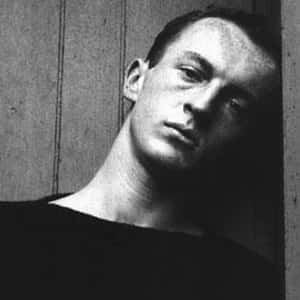

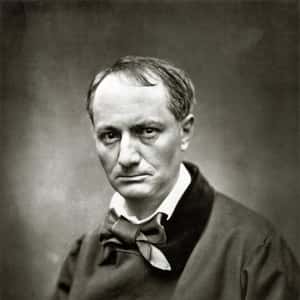





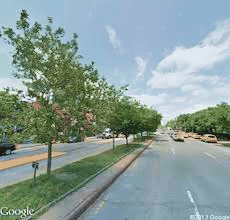
IMAGES
COMMENTS
The Dream Pool Essays (or Dream Torrent Essays) [1] was an extensive book written by the Chinese polymath and statesman Shen Kuo (1031-1095), published in 1088 during the Song dynasty (960-1279) of China. Shen compiled this encyclopedic work while living in forced retirement from government office, naming the book after his private estate ...
The Dream Pool Essays (or Dream Torrent Essays) was an extensive book written by the Chinese polymath and statesman Shen Kuo (1031-1095), published in 1088 during the Song dynasty (960-1279) of China. Shen compiled this encyclopedic work while living in forced retirement from government office, nami.
Free kindle book and epub digitized and proofread by volunteers.
Mengxi Bitan (Dream Pool Essays) was widely regarded as an important scientific works in ancient China. While in his thirties, Shen Kuo frequently dreamed of a place. In the dream, he ascended a hill, the summit of which was covered with brightly colored flowers and trees. Clear waters flowed at the base of the hill, banked on either side by ...
who wrote the dream pool essays. "Dream Pool Essays" is a work authored by Shen Kuo, a scientist and politician during the Northern Song Dynasty. Shen Kuo (1031-1095), styled Cunzhong, with the courtesy name Mengxi Zhangren, was of Han ethnicity and hailed from Qiantang County in Hangzhou, Zhejiang Province. Renowned as both a political ...
Dream Pool Essays contained the earliest description of the principle of the compass—magnetizing a needle by rubbing its tip with lodestone, hanging the magnetic needle with one single strain of silk with a bit of wax attached to the center of the needle. Shen Kua pointed out that the needle prepared this way sometimes points south, sometimes ...
THE book "Dream Pool Essays," known as "Mengxi Bitan" in Chinese, is recognized worldwide as "a landmark in the history of science in China" and also as an important encyclopedia produced nearly 1,000 years ago. It was the first book in the world to refer to the magnetic compass, describe movable type printing and explain the origin of fossils.
沈括. 梦溪笔谈. 1088. Kuo Shen, "Dream Pool Essay", 1088 This is a reprint of the Dream Pool Essays written by Shen Kuo. The book recorded Bi Sheng's work on the movable type. We used this as an artifact and evidence to better prove the invention of movable type. Images: Bibliothèque nationale de France.
Mengxi Bitan (Dream Pool Essays) was widely regarded as an important scientific works in ancient China. While in his thirties, Shen Kuo frequently dreamed of a place. In the dream, he ascended a hill, the summit of which was covered with brightly colored flowers and trees. Clear waters flowed at the base of the hill, banked on either side by ...
Shen Kuo was a Chinese astronomer, mathematician, and high official best known for The Dream Pool Essays, his book of observations and thoughts.The book contains hundreds of separate essays on a wide variety of subjects, such as mathematics, astronomy, cartography, optics, and medicine, among others, as well as the first known mention of the magnetic compass and of movable type.
Shen Kua, Mêng Chhi Phi Than (Dream Pool Essays) (excerpts) Mathematics: For effecting the division of a circumference I have another way. Take the diameter ( ching) of a circular area ( yuan thien) and halve it, then let this (radius) be taken as the hypotenuse ( hsüan) of a right-angled triangle.Let the difference which arises when the radius is diminished by the di- vided part (the ...
Dream Pool Essays (Chinese Edition) by Shen Kuo. Paperback - June 4, 2014. In this book, there are not only large amounts of records on natural sciences but also narrations on many social sciences. The wide-ranging contents cover stories, dialectics, musical temperament, image-numerology, officialdom, political wisdom, literature, art ...
Dream Pool Essays. By (author): Gil McElroy. Lifted from an ancient Chinese astronomical text, the title Dream Pool Essays hints at Gil McElroy's interest in cosmology: always a construct made visible between the elements of chaos. These poems constitute an active multiple streaming of sources usually considered quite disparate: the physical ...
Excerpt: The Dream Pool Essays (Pinyin: M ng X B T n; Wade-Giles: Meng Ch'i Pi T'an Chinese: ) was an extensive book written by the polymath Chinese scientist and statesman Shen Kuo (1031-1095) by 1088 AD, during the Song Dynasty (960-1279) of China. Although Shen was previously a highly renowned government official and military general, he ...
The Dream Pool Essays (Chinese Edition) Paperback - January 1, 2018. Language:Chinese.SoftCover.Pub Date:2018-02-01.publisher:Citic publishing group..description:Paperback. Pub Date: 2018-02-01 Publisher: citic publishing group. citic traditional Chinese ceremony volumes (50) is citic press introduced from Hong Kong zhong a deep international ...
The Dream Pool Essays was an extensive book written by the polymath Chinese scientist and statesman Shen Kuo by 1088 AD, during the Song Dynasty of China. Although Shen was previously a highly renowned government official and military general, he compiled this enormous written work while virtually isolated on his lavish garden near modern-day Zhenjiang, Jiangsu province.
The Dream Pool Essays or Dream Torrent Essays (Pinyin: Mèng Xī Bǐ Tán; Wade-Giles: Meng⁴ Hsi¹ Pi³-t'an²; Chinese: 夢溪筆談/梦溪笔谈) was an extensive book written by the Han Chinese polymath, genius, scientist and statesman Shen Kuo (1031-1095) by 1088 AD, during the Song dynasty (960-1279) of China.Although Shen was previously a highly renowned government official and ...
Shen Kuo's Dream Pool Essays consists of some 507 separate essays exploring a wide range of subjects. It was Shen's ultimate attempt to comprehend and describe a multitude of various aspects of nature, science, and reality, and all the practical and profound curiosities found in the world. The literal translation of the title, Dream Brook Brush ...
In his Dream Pool Essays or Dream Torrent Essays (夢溪筆談; Mengxi Bitan) of 1088, Shen was the first to describe the magnetic needle compass, which would be used for navigation (first described in Europe by Alexander Neckam in 1187). Shen discovered the concept of true north in terms of magnetic declination towards the north pole, with ...
360 13th Ave NE #0B-1Ba-350Sqft, Saint Petersburg, FL 33701 is a Studio, 1 bath, 350 sqft Apartment listed for rent on Trulia for $1,350. See 8 photos, review amenities, and request a tour of the property today.
Writers' Bookstore (Knizhnaya Lavka Pisatelei) features Russian and foreign literature, fiction, science and some contemporary literature in English. Address: 66 Nevsky Prospekt. Telephone: +7 (812) 314-4759. Bookstores in St. Petersburg, Russia is an index and summary of bookshops in St Petersburg. Read up on Saint Petersburg bookstores.
OPEN HOUSE: Saturday, September 28, 2024 3:00 PM - 6:00 PM. For Sale - 3290 64th St N, Saint Petersburg, FL - $550,000. View details, map and photos of this single family property with 3 bedrooms and 2 total baths. MLS# TB8304005.
Through our comprehensive pool services, we don't just build & maintain your pool; we turn your pool ownership experience into a hassle-free dream. Discover the difference today . Call Us For A FREE Estimate Today! +1 727-371-5200
Crissman Dr N #11, Saint Petersburg, FL 33714 is a 0 bath Lot/Land listed for $135,000. Build your dream home on this vacant residential lot in North St. Petersburg! This high and dry lot has been cleared and is located in a...
By 1717, the city's population of about 8,000 had tripled, and grew to around 40,000 by the time of Peter's death in 1725. Saint Petersburg had become the commercial, industrial, administrative, and residential "metropolis" of Russia. By the 1790s, it had surpassed Moscow as the empire's largest urban vicinity and was hailed as the ...
Outside, the resort-style pool offers a private oasis for leisure and social gatherings, while an inviting outdoor gas fire pit enhances the outdoor living experience. ... 350 13th Avenue NE is truly a dream home waiting for you to make it your own. Don't miss this unique opportunity to experience luxury living in one of St. Petersburg's ...
Take a virtual tour and see price history for 3457 22nd Avenue S, Saint Petersburg, FL, 33711, Residential, Single Family Residence, 3 bed, 2 bath, $420,000, MLS TB8307487.